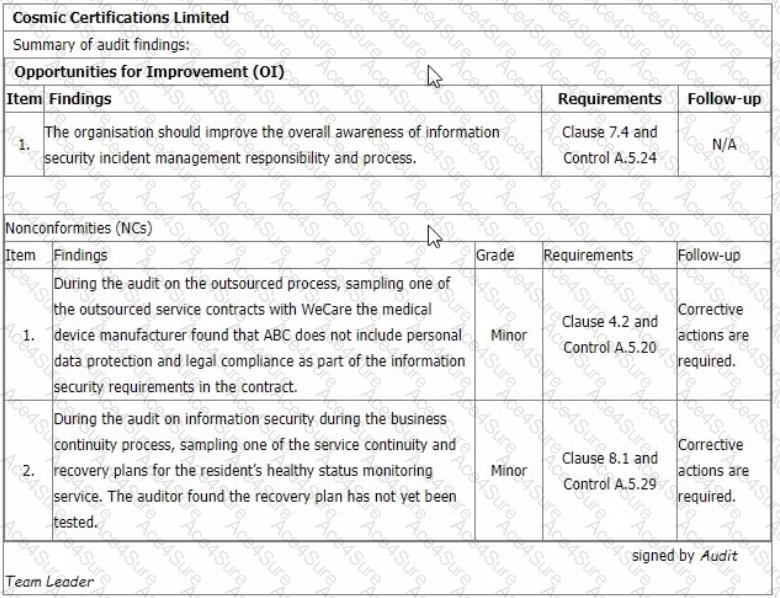•Minor Nonconformities: The identified nonconformities are minor, meaning they don't pose a significant risk to the information security management system (ISMS). They are likely to be easily rectified with focused corrective actions.
•Opportunity for Improvement: This is not a nonconformity but a suggestion for enhancing the ISMS. It doesn't require immediate corrective action but should be addressed in the organization's continual improvement efforts.
•Initial Certification: As this is an initial certification audit, the organization is expected to demonstrate its commitment to addressing any gaps identified. A partial audit allows for a focused follow-up on the specific areas of nonconformity, ensuring they have been adequately addressed.
Why other options are not suitable:
•A. Recommend certification after your approval of the proposed corrective action plan: While certification is the goal, it's premature to recommend it before verifying the effectiveness of the corrective actions.
•B. Recommend that a full scope re-audit is required within 6 months: This is too extensive for minor nonconformities. A full re-audit is usually reserved for major nonconformities or systemic issues.
•D. Recommend that the findings can be closed out at a surveillance audit in 1 year: This is too long a timeframe for addressing the nonconformities. Prompt corrective action is necessary to demonstrate commitment to the ISMS.
In summary, recommending a partial audit within 3 months strikes the right balance between allowing the organization time to implement corrective actions and ensuring timely verification of their effectiveness. This approach aligns with the principles of ISO 27001 and supports the organization's journey towards certification.



